Shirez Canyon: Discover a Majestic Beauty
Shirez Canyon is truly a remarkable geological formation that will leave you in awe of nature's power. But what exactly makes Shirez Canyon so impressive?
While understanding the science behind its creation is helpful, it's truly the experience of standing in the presence of this massive gorge that will leave you speechless. Today, you will take a short journey to Shirez Canyon, where you can explore its wonders without leaving the comfort of your couch or wherever you may be.
About the Shirez Canyon

The Shirez Canyon, also known as the Grand Canyon of Iran or "Tang-e Shirez" in Farsi is a unique geological formation located 45 kilometers northeast of Kuhdasht, the capital of Kuhdasht County, in Lorestan province. It has a length of 5 kilometers and towering walls reaching heights of 150 to 200 meters.
It is classified as a geopark on UNESCO's list of national monuments and its beauty lies in the perfect harmony between small and large springs, a meandering river that flows through its core, and the rugged rock formations sculpted by nature's hand. The canyon is adorned with untamed trees and jagged rocks, creating a mesmerizing landscape that enchants all who witness it.
As you explore deeper into the canyon, you'll be greeted by the tranquil sounds of running water from the beautiful springs that dot the area. The convergence of rivers into the canyon creates a captivating display as the water gracefully cascades from the mountaintops, disappearing into the rocks below. Adding to the allure is the natural tunnel known as the "Bridge of God," which adds an element of mystery to the journey.
The Shirez Canyon hike is a thrilling adventure that requires no technical equipment, allowing visitors to immerse themselves in the breathtaking surroundings. Covered in lush vegetation, the canyon is home to an untouched forest, where plants and trees seamlessly blend with the rocky terrain. The experience of walking through this pristine landscape, surrounded by the soothing sounds of flowing water, is truly enchanting.
| Read more: Why Explore Iran's Ecotourism Wonders
How the Shirez Canyon was Formed
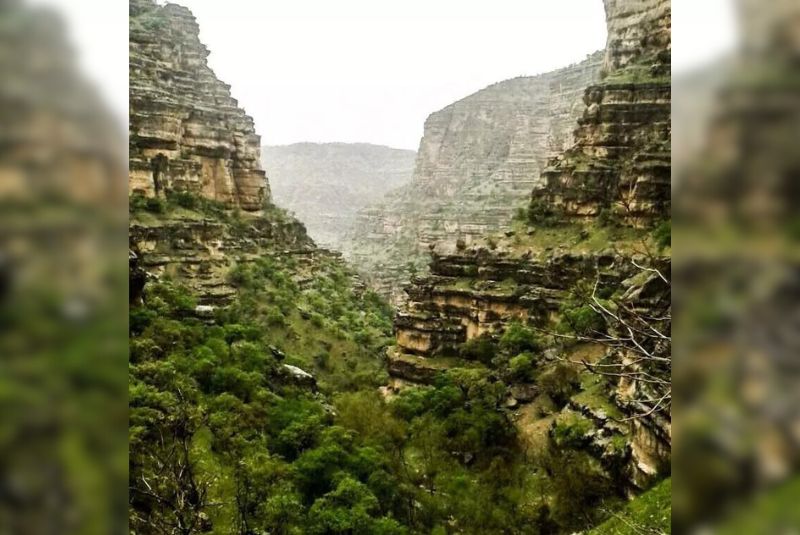
The formation of the Shirez Canyon can be attributed to the erosion of sedimentary rocks characterized by distinct layering. Geologists believe that the canyon took shape over time due to the natural processes of erosion. The rocks found in the canyon, known as Asmari formations, were formed in a marine environment during the third geological age, also known as the Mesozoic epoch.
In addition to the canyon itself, there is a remarkable column in the area that shares a resemblance to the Shirez Canyon. This column, shaped like a minaret, was created by the wind and further shaped by natural occurrences such as earthquakes. Standing approximately 80 meters tall and 10 meters wide, this column holds both symbolic and geological significance.
Due to its historical characteristics and age, the Shirez Canyon has garnered attention from the cultural heritage organization. They recognize its importance as a natural and cultural treasure, worthy of preservation and admiration.
| Suggestion: Chahkooh Canyon on Qeshm + Photos
Shirez Canyon Attractions

When visiting the Shirez Canyon, there are several remarkable sights that you shouldn't miss:
1. Natural Scenery and Wildlife
As you enter the canyon, you'll be greeted by the stunning landscape adorned with soaring sycamore, oak, grape, fig, and wild pear trees. Depending on the season, you may even have the opportunity to taste these delicious fruits. Keep an eye out for the wild mountain goats that roam the Zagros Mountains. And if you happen to feel something in the river, take a closer look to witness the fish gracefully swimming in the crystal-clear water.
| Discover: Iran's Wildlife - A Nature Lover's Guide + Pics
2. The Pol-e Khoda Cave
At the mouth of the Shirez Canyon, you'll find a cave that stretches for 150 meters and is home to an icy-cold river. It's important to note that the water level in some parts of the cave may be higher than knee level, and the jagged stones on the floor can be sharp, so it's advised to wear appropriate footwear. Remember to bring essential supplies as the cave is completely dark and lacks mobile reception. Local inhabitants refer to this cave as "Pol-e Khoda" or "The Bridge of God."
| Discover: The Most Famous Caves of Iran
3. Stone Minaret
A captivating sight within the Shirez Canyon is the Stone Minaret. Over millions of years, this pillar has been shaped by various natural forces such as wind, rain, and powerful earthquakes. Standing at an impressive height of 80 meters and with a diameter exceeding 10 meters, it is a true marvel. Observing this stone minaret is a must-see attraction in the canyon.
4. Parandegan Waterfall
Within the Shirez Gorge, there are several waterfalls, but one that stands out is the Bird's Waterfall, locally known as Parandegan. While exploring the Shirez Canyon, you may not come across many living creatures, but if you observe the carved holes in the gorge's walls, you'll spot birds nesting and inhabiting these crevices.
| Read more: Top 20 Most Beautiful Waterfalls in Iran
Shirez Canyon Location
Shirez Canyon is located in the breathtaking Zagros Mountains of Iran and lies in the western part of Lorestan province. It is located in Koohdasht County at the border of Kermanshah and Ilam provinces, approximately 55 kilometers from Koohdasht. The canyon is accompanied by the majestic Seimareh River, a significant waterway that merges with the Karkheh River before making its way to the beautiful Hoor Al-Azim wetland in the south. The surrounding mountainous landscape and the presence of the flowing river create an awe-inspiring setting for visitors to explore and appreciate the wonders of nature in this region.
| Suggestion: Iran's Top 14 National Parks Every Tourist Should Visit
How to Get to Shirez Canyon
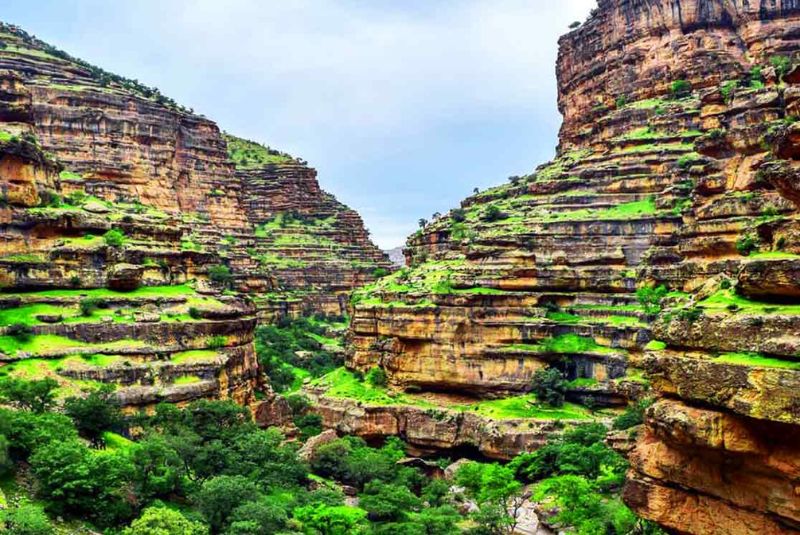
Getting to Shirez Canyon is relatively straightforward, and there are three main routes you can take, each with its own advantages and disadvantages.
1. Kohdasht-Tengeh Shirez Route
The recommended route is to head north from Kohdasht City. After traveling 85 kilometers from Khorram Abad, reach Kohdasht and continue west for 50 kilometers to Olad Qoba hamlet, located north of Kohdasht. From there, you can reach the Simre River and enter Shirez Gorge. The journey involves an asphalt road followed by a two-kilometer stretch of dirt, which you can cover on foot until you reach the canyon.
2. Kermanshah-Tengeh Shirez Route
Another option is to start from Kermanshah. Travel towards Jeyran Belagh and Halashi to reach the Zardlan section of Shirez Canyon. Alternatively, you can go from Jeyran Belagh to the confluence of the Seimareh River, but this route is more challenging.
3. Lorestan-Tengeh Shirez Route
If you choose this route, travel approximately 100 kilometers from Khorramabad to Kohdasht. Then, proceed to Olad Qobad Road and pass through the Zardele settlement to reach Shirez Canyon.
Once you arrive at the canyon, the final three kilometers can be covered on a pleasant dirt road. There is a parking area near a fishing facility, and from there, you can explore the canyon on foot. It usually takes around 3-4 hours to see the canyon, and you have the option to camp either at the canyon or at the parking lot.
| Also read about: Stars Valley in Qeshm Island
Best Time to Visit Shirez Canyon
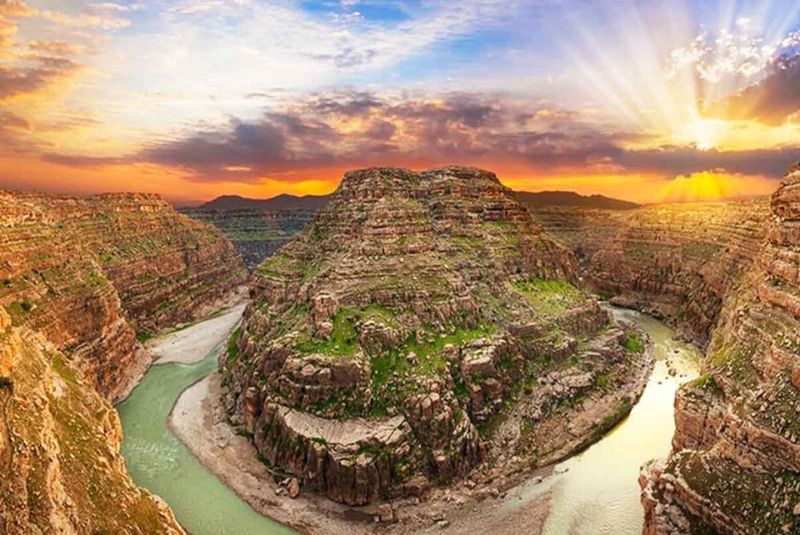
The best time to visit Shirez Canyon is during spring and summer. The western provinces of Iran, including Kohdasht and the Shirez Canyon, experience cold and rainy weather for about half of the year. Autumn and winter are not ideal times to visit due to heavy rainfall and the possibility of flooding.
In spring, the weather in Shirez Canyon is cool with occasional spring rains. Summer brings warmer temperatures to the region, and the volume of water in the Shirez River increases, making the canyon even more spectacular.
Shirez Canyon Nearby Attractions
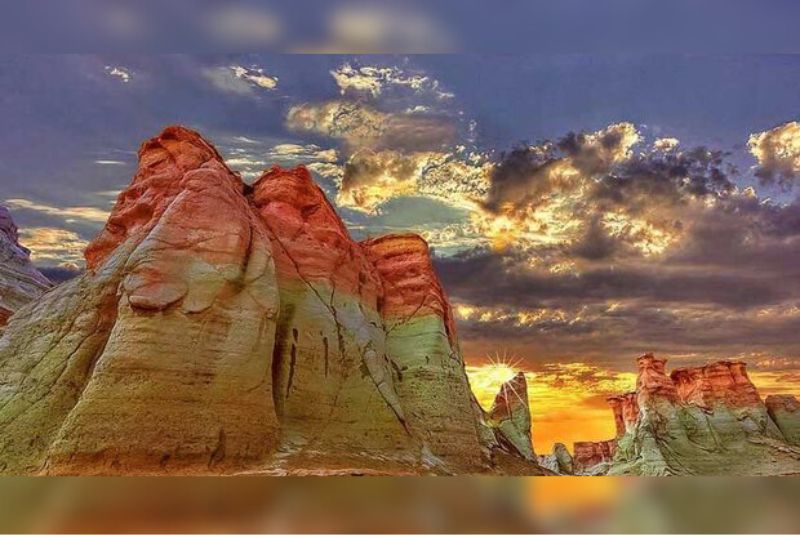
While exploring the Shirez Canyon in Iran, you can also take the time to visit other notable places in the surrounding area. Here are some of the top attractions nearby:
1. Blooran Forest Area
Situated among the Zagros mountains, Blooran Forest is one of Iran's most beautiful forests and home to ancient oak trees. Many locals from Kohdasht and nearby areas visit the Bloran Forest Park for nature exploration and camping. To reach the forest, travel from Kohdasht to Islamabad West and continue to the Village of Bolouran, where the lush forest awaits.
2. Sartirhan Valley
Located west of Kohdasht, Sartirhan Valley is a picturesque valley filled with lush plains, colorful flowers, and aromatic plants. In spring, the valley comes alive with vibrant greenery. The Seimare River flows through the valley, adding to its beauty. With over 170 historic hills, Sartirhan Valley offers a glimpse into different periods of history and is a must-visit for history enthusiasts.
3. Si Pele Bridge
The historic Si Pele Bridge is one of the famous bridges along the Seimare River. Believed to date back to the Sassanid period, this bridge has a length of about 17 meters. While parts of the bridge have been lost over time, it remains a significant historical site. Located near the village of Sartirhan, the Si Pele Bridge is worth exploring for its architectural and historical significance.
4. Mirmolas Cave
Situated 30 kilometers from Kohdasht, Mirmolas Cave is an ancient relic in Lorestan province. The cave features petroglyphs depicting animal motifs, hunting scenes, and fights. Archaeologists estimate its age to be between 1500 and 2000 BC. Surrounded by ancient oak forests, the cave is in need of protection to preserve its historical value.
5. Kouhzad Castle
Positioned at an altitude of 1000 meters on the Wozniar or Vizanhar mountains, Kouhzad Castle is an ancient monument in Kohdasht. Believed to date back to the Parthian period, this castle offers breathtaking views of the surrounding natural landscapes. The path to the castle requires some physical fitness but rewards visitors with a unique historical experience.
6. Red Dom Lori Temple
Located 6 kilometers northwest of Kohdasht, the Red Dom Lori Temple is a historical attraction situated on the slope of the Changari mountain. This temple dates back to the first millennium BC and has yielded various ancient objects and relics. Its name is derived from its proximity to the village of Red Dem and the Lur tribes' settlement in the area.
| Read more: Rainbow Valley on Hormuz Island
Tips for visiting Shirez Canyon
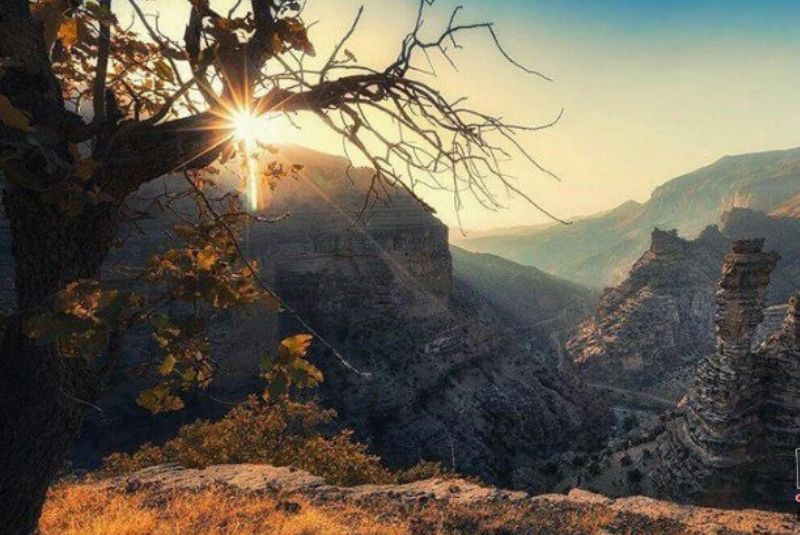
To ensure a pleasant and safe visit to Shirez Canyon, it's important to consider a few tips:
- Equipment: Due to the variable slopes and steep paths in the canyon, it's advisable to have appropriate equipment. Bring a mountaineering hat, a light backpack with water and food, and wear comfortable clothes and suitable shoes. Consider carrying an extra coat or warm clothing in case of changing weather conditions.
- Preserve the Environment: Shirez Canyon is a pristine area with no amenities. Respect the ecosystem and avoid damaging the environment. Refrain from littering and leave no trace behind. Take only photographs and memories with you.
- Weather Conditions: Before visiting the canyon, check the weather forecast, especially during cold or rainy seasons. It's preferable to avoid traveling during heavy rainfall as it may affect your experience.
- Safety Precautions: If you plan to explore the caves or dark areas of Shirez Canyon, bring a flashlight or headlamp. Open-toed sandals are not recommended for the canyon's tracks. Choose footwear that provides protection, even when wet.
- Camping: If you intend to camp in the canyon, ensure you have the necessary equipment for a safe and enjoyable experience. Be prepared with suitable camping gear and supplies.
- Communication: Keep in mind that cell phone reception may be limited in most parts of the canyon. Plan accordingly for communication needs.
- Physical Fitness: Shirez Canyon hike only requires relative physical fitness and is accessible to visitors who are not professional athletes.
| Also might be interesting: Hormuz Valley of the Statues
Bottom Line
Shirez Canyon is a remarkable geological wonder that will leave you in awe of nature's power. Its towering walls, meandering river, and rugged rock formations create a mesmerizing landscape. Exploring the canyon is a thrilling adventure that immerses you in its breathtaking surroundings. So whenever you find yourself in Iran, make sure to visit Shirez Canyon as it promises an unforgettable experience.
Share your story!
Comment below and let us know about your Experience.
Your story inspires others!


Comment
Leave a Comment